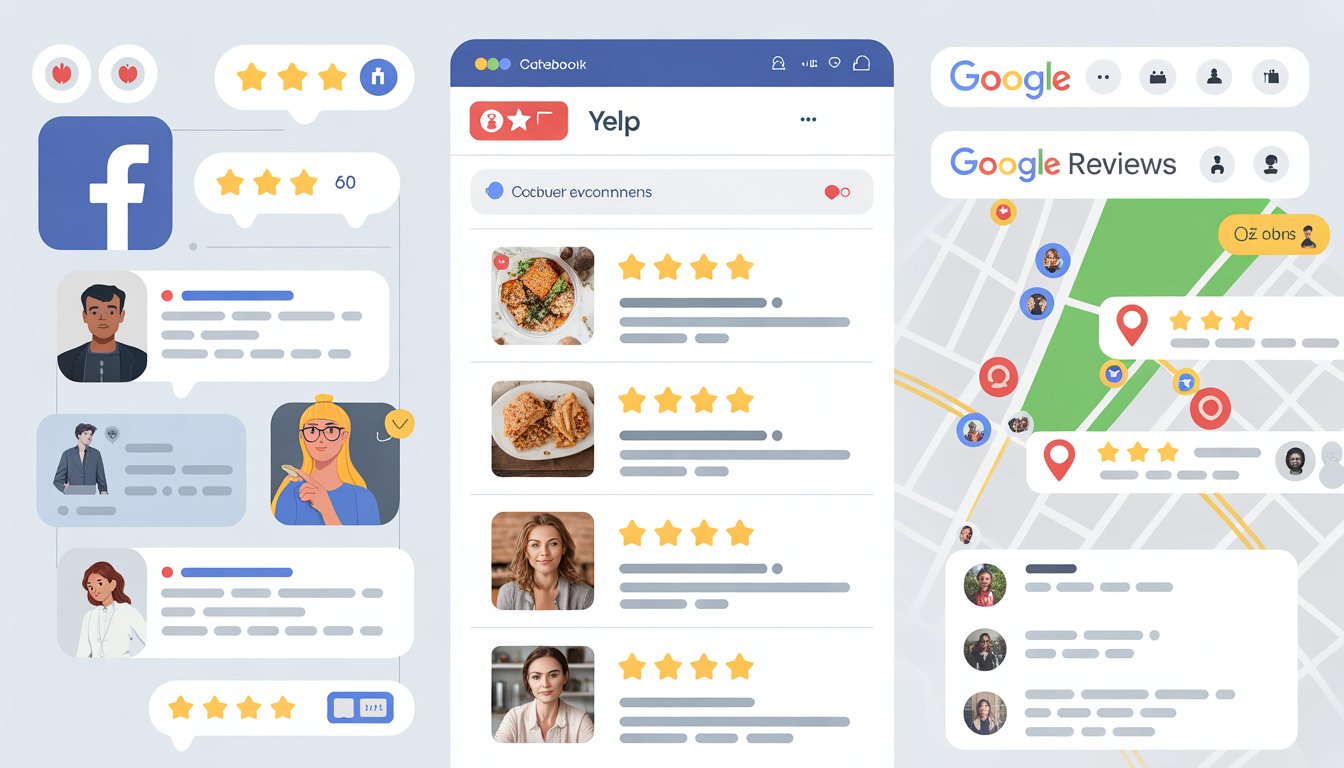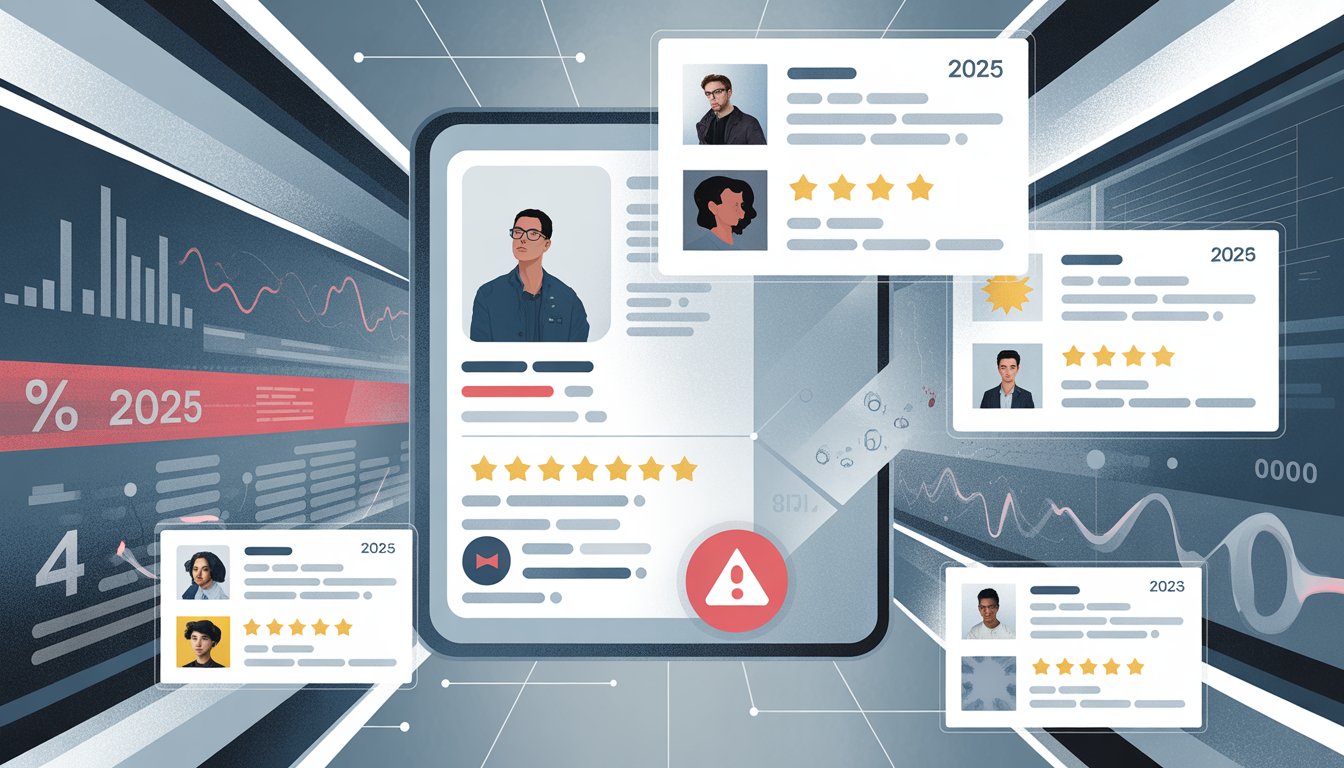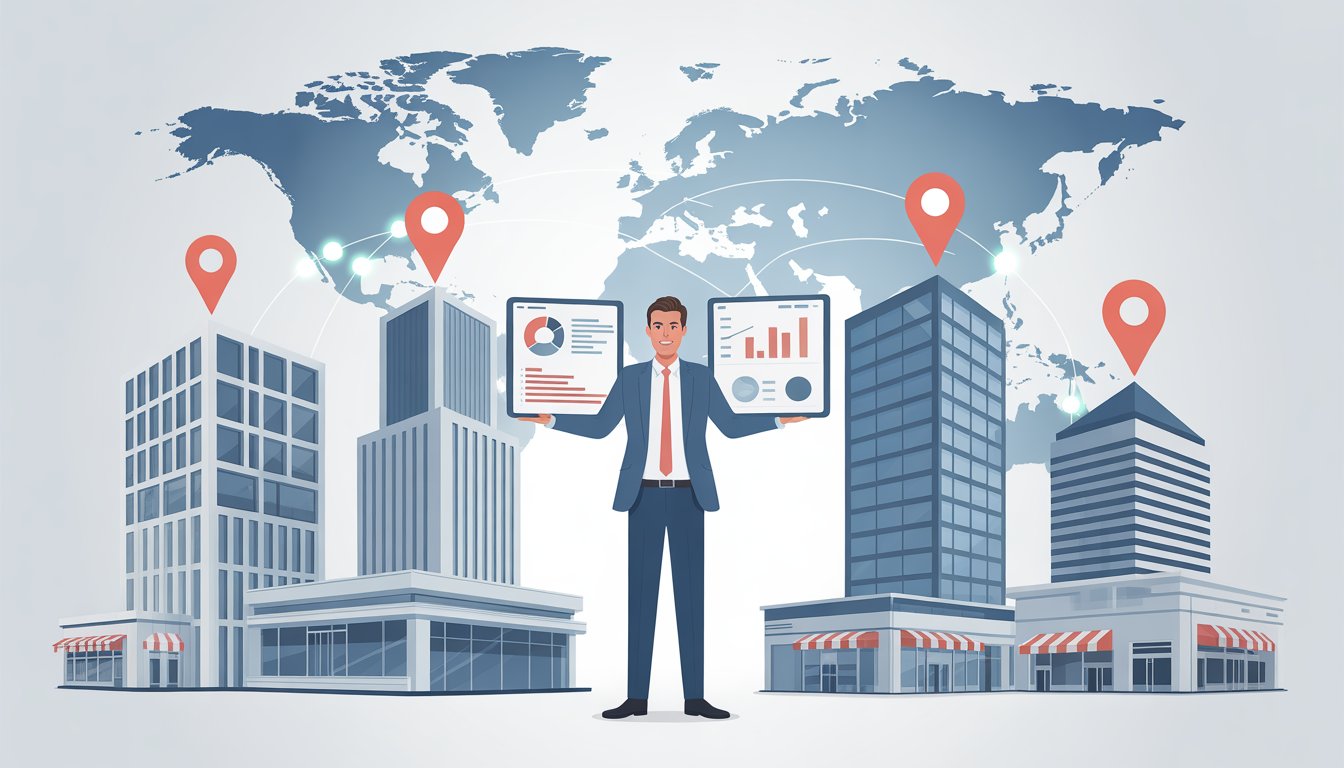Customer reviews can make or break your business reputation. Responding to every single review manually takes hours of your time each week.
Many business owners wonder if they should use AI tools and automation to handle this growing workload.

The answer depends on your business needs: automation works well for positive reviews and can save significant time. You'll still need human oversight for negative reviews and complex situations.
Most successful businesses use a hybrid approach where automation handles routine responses while humans manage sensitive feedback.
The key is understanding what automation can and cannot do for your specific situation. Getting this balance right will help you maintain authentic customer relationships while freeing up time for other important business tasks.
Key Takeaways
- Automation saves time on positive reviews but requires human intervention for negative feedback and complex situations
- The best approach combines automated tools with human oversight to maintain authenticity and handle nuanced customer concerns
- Success depends on choosing the right tools and setting up proper workflows that match your business volume and customer expectations
Understanding Automated Review Responses

Response automation uses software to send replies to customer reviews without manual work. AI technology analyzes review content and creates personalized responses based on pre-set rules and templates.
What Is Response Automation?
Response automation is a system that automatically sends replies to customer reviews across platforms like Google, Yelp, and app stores. The software reads incoming reviews and generates appropriate responses based on rules you set up.
Basic automation uses simple templates. When a 5-star review comes in, the system sends a standard "thank you" message.
Advanced automation analyzes review content and creates custom replies.
You can automate different types of reviews:
- Positive reviews (4-5 stars)
- Negative reviews (1-3 stars)
- Reviews with specific keywords
- Reviews in different languages
Most systems let you exclude certain reviews from automation. This helps you handle complex complaints manually while automating simple thank-you messages.
The main benefit is speed. Your automated system can reply within minutes instead of hours or days.
How AI Powers Automated Replies
AI analyzes review text to understand what customers are saying. It looks at star ratings, keywords, and emotional tone to pick the right response type.
Natural language processing helps AI understand context. If someone writes "great app but crashes," the AI knows this is mixed feedback that needs a specific reply template.
Machine learning improves responses over time. The AI learns which reply styles get better results and adjusts accordingly.
AI can also:
- Translate reviews and responses into different languages
- Identify spam or fake reviews
- Sort reviews by topic (like "login issues" or "pricing complaints")
The technology creates responses that sound human-written. It varies sentence structure and word choice so replies don't look identical.
Overview of Automated Workflows
Automated workflows follow simple steps to process reviews efficiently. The system monitors your review platforms and triggers actions based on rules you create.
Step 1: New review detection
Step 2: Content analysis and categorization
Step 3: Template selection or AI response generation
Step 4: Response posting or human review queue
You set up filters to control which reviews get automated responses. Common filters include:
- Star rating ranges
- Review length (short vs. long)
- Specific keywords or phrases
- Language detection
Workflow customization lets you handle different review types appropriately. Positive reviews might get immediate automated thanks.
Negative reviews might go to your support team first.
Most platforms offer approval workflows where automated responses wait for your review before posting. This gives you control while still saving time on response creation.
Key Benefits of Automating Review Responses

Automating customer reviews creates faster response times, frees up team resources, and maintains professional communication standards. These advantages help businesses manage their online reputation more effectively.
Improved Response Rates and Customer Engagement
Response automation lets you reply to every customer review within hours instead of days or weeks. Most businesses only respond to 30% of their reviews manually.
With automation, you can reach 100% response rates. Fast responses show customers you care about their feedback.
When customers see quick replies, they feel valued and are more likely to return.
AI can analyze each review and create personalized responses that address specific concerns. This creates better connections with customers than generic thank-you messages.
Your response speed affects how other potential customers view your business. Quick replies signal that you actively manage your reputation and customer service.
Significant Time Savings for Teams
Manual review responses take 10-15 minutes per review when done properly. A business with 50 monthly reviews spends over 12 hours just writing responses.
Automation handles this work in seconds. Your team can use those saved hours for other important tasks like:
- Customer service improvements
- Product development
- Marketing campaigns
- Staff training
You can redirect one employee's entire workday from review responses to revenue-generating activities. This creates immediate cost savings and productivity gains.
Consistency in Brand Voice
Human writers create different tones and styles across review responses. One person might write formally while another uses casual language.
Automation ensures every response matches your brand voice perfectly. You train the AI with your preferred tone, language, and key messages.
Your responses will always include the right level of professionalism and friendliness. Customers receive consistent experiences whether they leave positive or negative feedback.
The AI follows your brand guidelines every time. It never forgets to include important information like contact details or business hours when appropriate.
Potential Drawbacks and Limitations
Automated review responses come with significant risks that can damage your business reputation. Generic responses and lack of human empathy are major concerns, especially when dealing with upset customers who need personal attention.
Risks of Generic or Inappropriate Responses
Automated systems often miss context clues in customer reviews. They may send cheerful thank-you messages to reviews that mention problems or complaints.
Your customers can easily spot robotic responses. Generic templates make your business look like it doesn't care about individual feedback.
Common automation mistakes include:
- Responding to complaints with standard positive replies
- Missing specific details customers mention
- Using the wrong tone for the situation
- Failing to address actual concerns raised
AI systems struggle with sarcasm, mixed emotions, or complex feedback. A customer might leave a mostly positive review but mention one issue.
Automation could ignore the problem completely. You risk looking unprofessional when responses don't match review content.
This can push potential customers away from your business.
Maintaining Human Touch and Empathy
Automated responses lack genuine emotional connection with your customers. People want to feel heard and valued when they share their experiences.
Real empathy requires understanding context and emotions. Machines cannot truly relate to customer frustrations or celebrations.
Your brand personality gets lost in template responses. Each automated reply sounds the same, making your business feel corporate and distant.
Key human elements automation cannot provide:
- Personal acknowledgment of specific experiences
- Emotional intelligence in responses
- Ability to read between the lines
- Genuine appreciation for feedback
Customers notice when responses feel authentic versus automated. Personal touches like mentioning specific details or thanking customers by name make a huge difference.
Building relationships requires human judgment. You need to know when to be formal, casual, apologetic, or celebratory based on each unique situation.
Managing Negative Reviews Sensitively
Negative customer reviews need careful, personalized responses. Automation often makes bad situations worse by responding inappropriately.
Angry customers require specific acknowledgment of their problems. Generic apologies feel dismissive and can escalate their frustration.
Sensitive situations that need human handling:
- Service failures or mistakes
- Safety concerns or complaints
- Billing disputes or refund requests
- Staff behavior issues
Automated systems cannot assess the severity of complaints. They might treat minor issues the same as major problems, missing opportunities to properly address concerns.
You risk legal or public relations disasters when automation responds poorly to serious complaints. Some negative reviews require immediate human intervention and follow-up.
Complex customer issues often need offline resolution. Humans can judge when to move conversations to private channels like phone calls or direct messages.
Human responders can also spot fake or spam reviews that automation might treat as legitimate feedback.
Choosing the Right Automation Tools
The right automation tool depends on your business size, budget, and technical needs. Simple solutions like Zapier work well for basic tasks, while AI-powered platforms handle complex review analysis and responses.
Popular Solutions: Zapier, ChatGPT, and Others
Zapier connects different apps to automate simple review tasks. You can set up workflows that move reviews from Google to spreadsheets or send alerts when new reviews arrive.
It works best for basic automation like review collection and notifications. The platform offers thousands of app connections but lacks advanced AI features.
ChatGPT and AI tools handle more complex review response tasks. These platforms analyze review sentiment and create personalized responses based on the content.
Popular AI review tools include:
- VisiHero for automated responses and tracking
- ReviewFlowz for multi-platform management
- GatherUp for AI-powered reply generation
AI tools save significant time but require careful setup. They work well for positive reviews but often need human oversight for negative feedback.
Integrating Automation with Review Management Platforms
Most review management platforms now include built-in automation features. These integrated solutions offer better control and consistency than standalone tools.
Look for platforms that provide sentiment analysis, multi-platform monitoring, and customizable response templates. The best systems let you set different automation rules for different review types.
Integration features to prioritize:
- Real-time review alerts across platforms
- Automated tagging and categorization
- Custom keyword insertion for SEO benefits
- Manual override options for complex situations
Choose platforms that connect with your existing business tools. This creates smoother workflows and reduces the need to switch between different systems throughout your day.
Implementing Review Response Automation Effectively
Successful review response automation requires careful planning, smart template design, and ongoing optimization. The key is balancing efficiency with authentic customer engagement while maintaining your brand voice across all interactions.
Best Practices for Personalized Automated Replies
Your automated responses must feel genuine, not robotic. Use dynamic fields like {reviewer_name} and {business_name} to personalize each reply.
This simple step makes customers feel acknowledged rather than processed. Create multiple templates for similar situations.
Instead of one generic "thank you" message, develop three or four variations for positive reviews. This prevents your responses from appearing repetitive to customers who read multiple reviews.
Address specific review elements in your templates. If a customer mentions your staff, product quality, or service speed, acknowledge those specific points.
AI tools can analyze review content and select appropriate template responses based on key phrases. Keep your brand voice consistent across all automated replies.
Write templates that match how you would speak to customers in person. Avoid overly formal language unless that fits your business style.
Set clear boundaries for automation. Never automate responses to reviews that mention legal issues, safety concerns, or serious complaints.
These situations require human attention and careful handling.
Setting Up Automated Workflows
Start by connecting your review platforms to your automation tool. Focus on Google My Business first since it handles the most customer traffic.
Then add Yelp, Facebook, and industry-specific platforms. Configure automation rules based on rating levels and keywords.
Create separate workflows for 5-star reviews, 3-4 star reviews, and 1-2 star reviews. Each workflow should have different response timing and template selections.
Set up trigger conditions that determine when automation kicks in:
- Star ratings (5-star vs 1-star)
- Review length (short vs detailed feedback)
- Keyword detection (positive words like "great" vs negative words like "disappointed")
- Time of submission (business hours vs after hours)
Build in approval processes for sensitive reviews. Flag reviews containing words like "lawsuit," "injury," or "discrimination" for manual review before any automated response goes live.
Test your workflows with sample reviews before going live. Send test responses to your own email to check formatting, personalization, and tone.
Monitoring and Adjusting Automation Strategies
Track key metrics to measure your automation success. Monitor response rates, customer engagement after replies, and overall rating trends.
Most review management platforms provide analytics dashboards for this data. Review your automated responses weekly during the first month.
Look for patterns in customer reactions and identify templates that need improvement. Pay attention to reviews where customers respond positively to your automated replies.
Update your templates based on common feedback themes. If customers frequently mention new services or seasonal offerings, adjust your response templates to acknowledge these points.
Schedule monthly reviews of flagged or manually handled reviews. Look for patterns that might need new automation rules or template updates.
Document what types of reviews consistently require human intervention. Monitor platform changes that might affect your automation.
Review platforms occasionally update their APIs or policies. Stay informed about these changes to keep your automated workflows running smoothly.
Adjust timing based on customer behavior patterns. If you notice better engagement when responses come during specific hours, modify your scheduling rules accordingly.
Strategic Considerations for Businesses
Making the right choice between automated and manual review responses requires careful evaluation of your business needs and goals. The decision impacts your customer relationships, brand reputation, and marketing effectiveness in significant ways.
Balancing Automation and Manual Responses
You should use automation for positive reviews with simple, straightforward content. These responses work well with templates that thank customers and mention your business name.
Manual responses work best for:
- Negative reviews requiring specific solutions
- Reviews mentioning staff members by name
Manual responses are also needed for complex feedback with multiple issues. Reviews that need personalized attention benefit from a human touch.
You can automate responses to 5-star reviews without detailed comments. Manually handle all negative feedback.
Most businesses find that automation covers about 60-75% of their review volume. The remaining reviews need human attention to address specific concerns properly.
Consider your monthly review volume when deciding. Businesses receiving fewer than 20 reviews per month can manage manual responses easily.
Higher volumes make automation more valuable.
Impact on Customer Satisfaction and Reputation
Automated responses can damage your reputation if they miss important context. Customers notice when responses don't match their actual experience.
For example, a generic positive response to a 4-star review that mentions bathroom cleanliness issues looks disconnected. This creates a poor impression with potential customers reading your reviews.
Quality concerns with automation:
- Generic responses seem impersonal
- Missing specific customer concerns
Automated systems have an inability to address complex complaints. There is a risk of appearing robotic or fake.
Google favors businesses that respond to reviews consistently. A 100% response rate using automation beats responding to only negative reviews manually.
However, response quality still impacts customer satisfaction. Poorly matched automated responses can frustrate customers who took time to write detailed feedback.
Aligning Review Responses with Marketing Goals
Review responses create content that search engines index. You can boost your local SEO by including relevant keywords naturally in your responses.
Marketing benefits of strategic responses:
- Include business name and location
- Mention specific services or products
Use keywords customers search for. Create fresh content for search engines.
Automated systems can insert keywords programmatically. Set up rules to mention "takeout" when customers use that word in their reviews.
Your responses also serve as marketing to potential customers. People read an average of 10 reviews before making decisions.
Well-crafted responses show you care about customer experience. Consider your brand voice when choosing automation.
Templates must match how you normally communicate with customers. Inconsistent tone across responses creates confusion about your brand identity.
Track metrics like response rates and customer follow-up to measure success. This data helps you refine your approach and improve both automated and manual responses over time.
Frequently Asked Questions
Review response automation raises many practical questions for business owners. These concerns range from maintaining authentic customer connections to understanding legal requirements and measuring the real impact on brand reputation.
What are the benefits of automating responses to customer reviews?
Automated review responses save significant time for your business team. You can respond to dozens of reviews in minutes instead of hours.
AI tools provide consistent messaging across all platforms. Your brand voice stays the same whether responding to Google, Yelp, or Facebook reviews.
Response speed improves dramatically with automation. Customers receive acknowledgment within minutes of posting reviews instead of waiting days.
Cost reduction is another major benefit. You spend less on staff time while maintaining active review management.
Automated systems can handle high review volumes. This scalability helps growing businesses manage increased customer feedback without hiring more staff.
How can businesses ensure personalized engagement while using automated review response systems?
Use the customer's name in automated responses when available. Most AI tools can pull names directly from review platforms.
Create different response templates for various situations. Separate templates for positive reviews, negative feedback, and neutral comments work better than generic responses.
Include specific details from the customer's review in your automated reply. AI systems can reference particular services or issues mentioned.
Set up manual review for complex situations. Have your team handle detailed complaints or unusual circumstances personally.
Customize your brand voice in the automation settings. Input your preferred tone, language style, and key phrases to maintain authenticity.
What are the potential pitfalls of setting up automatic replies to online reviews?
Generic responses can make customers feel ignored. Automated replies that don't address specific concerns may worsen negative situations.
Technical problems can delay or duplicate responses. System failures might send multiple replies to the same review or miss reviews entirely.
Inappropriate responses to sensitive issues create bigger problems. Automated systems might respond poorly to serious complaints about safety or discrimination.
Over-reliance on automation reduces human connection. Some customers expect personal attention, especially after negative experiences.
Inconsistent quality between platforms can confuse customers. Different automation settings might create varying response styles across review sites.
In what ways can automation tools be integrated with review platforms for efficient response management?
Most automation tools connect directly with Google My Business through API integration. This allows real-time review monitoring and instant responses.
Multi-platform dashboards combine reviews from Google, Yelp, Facebook, and other sites. You manage all responses from one central location.
Webhook notifications alert your system when new reviews arrive. This triggers automated responses within minutes of posting.
CRM system integration syncs review data with customer records. You can track review history alongside other customer interactions.
Mobile apps let you monitor and adjust automated responses remotely. You stay connected to your review management even when away from the office.
Are there any legal considerations to be aware of when automating responses to reviews?
Data privacy laws require careful handling of customer information. Your automation system must comply with regulations like GDPR or CCPA.
Platform terms of service may restrict certain automated activities. Check each review site's policies before implementing automation tools.
Disclosure requirements might apply to automated responses. Some jurisdictions require businesses to inform customers when AI generates replies.
False advertising laws still apply to automated review responses. You cannot make misleading claims about your products or services in automated replies.
Industry-specific regulations may impose additional restrictions. Healthcare, finance, and legal businesses often face stricter communication requirements.
How does review response automation impact customer perception and brand reputation?
Quick response times improve customer satisfaction scores. Customers appreciate fast acknowledgment of their feedback, even from automated systems.
Consistent professional responses build trust over time. Regular, polite replies show customers you care about their opinions.
Poor automation implementation can damage your reputation. Generic or inappropriate responses may frustrate customers and generate negative word-of-mouth.
Transparency about automation affects customer trust. Some customers prefer knowing when responses are automated rather than being misled.
Response quality matters more than speed for reputation building. Well-crafted automated responses that address specific concerns enhance your brand image.










